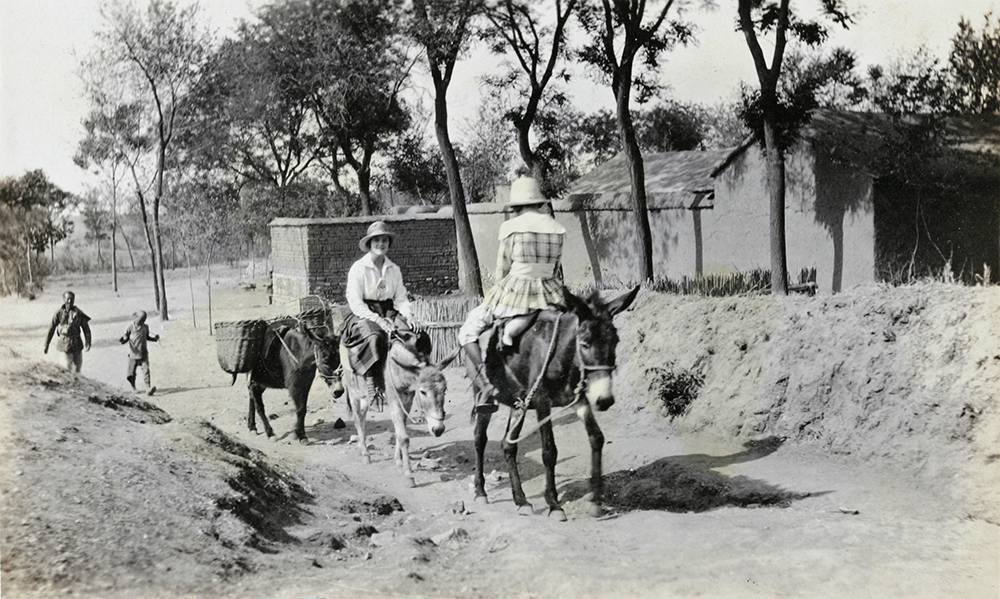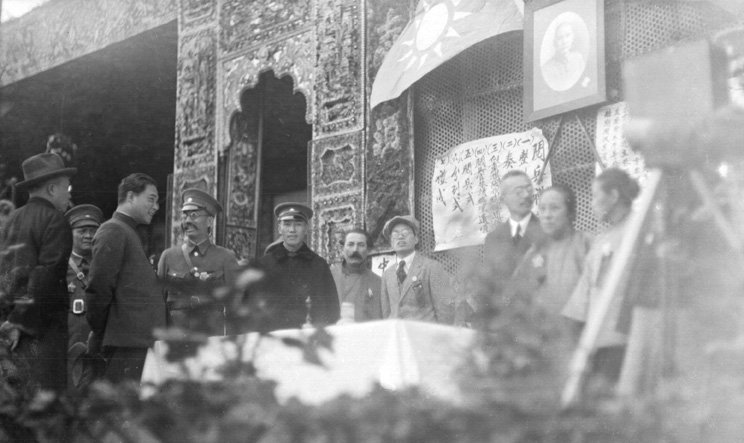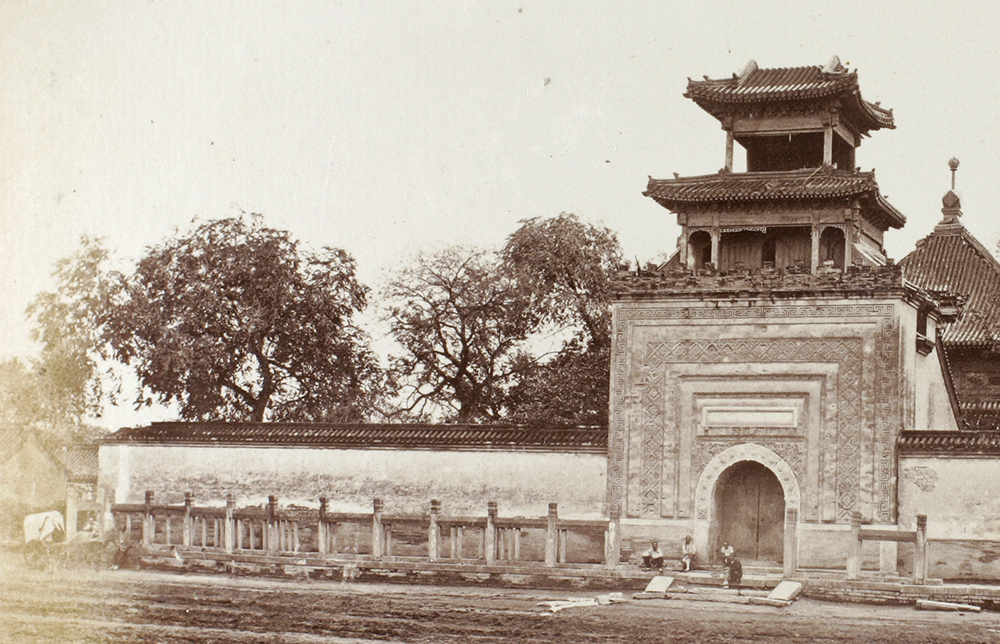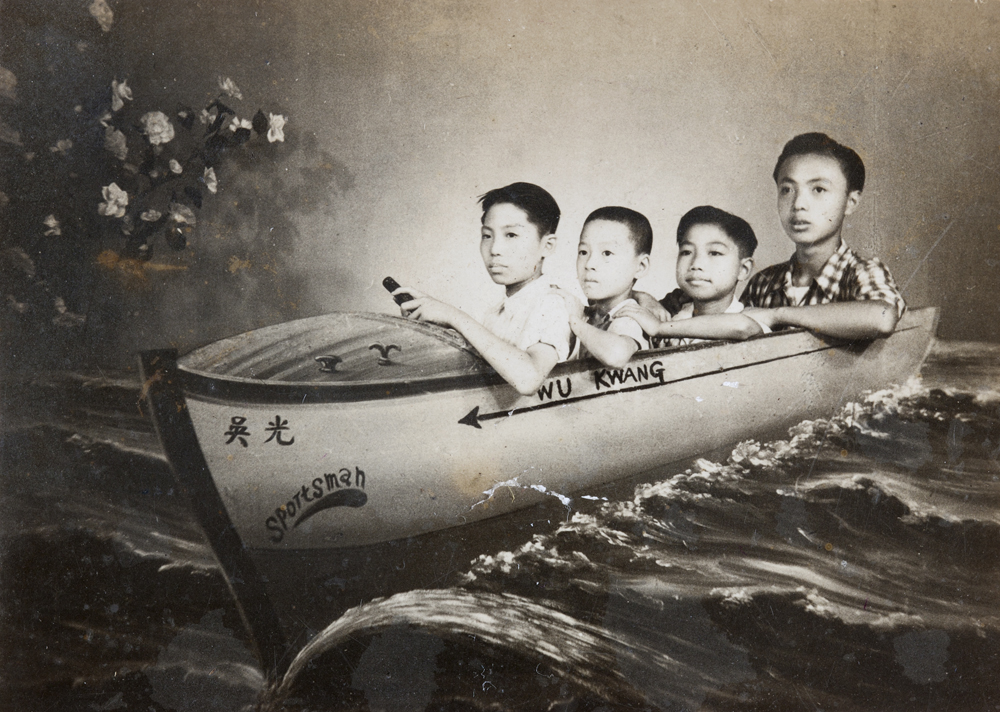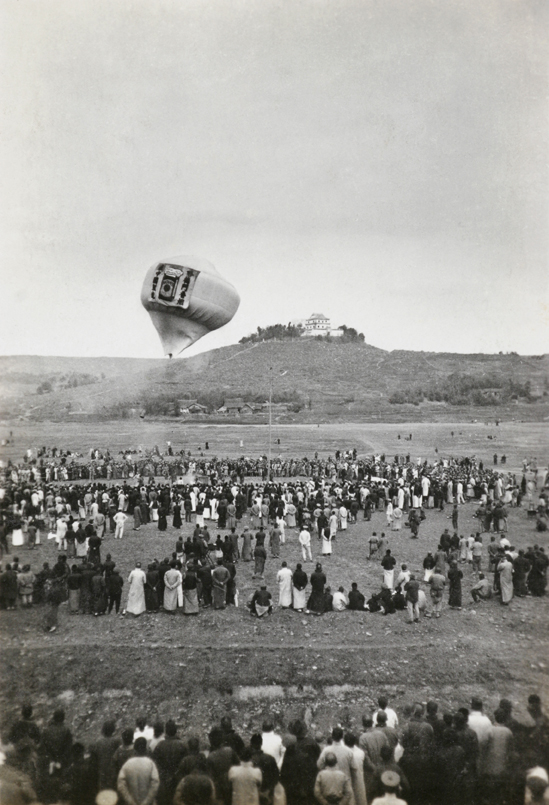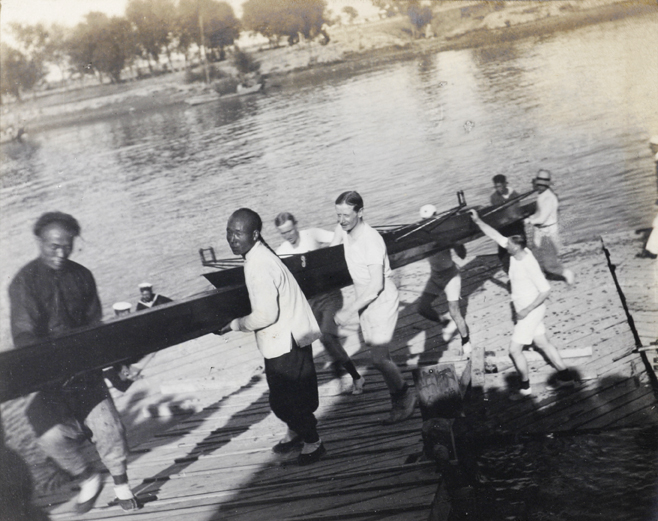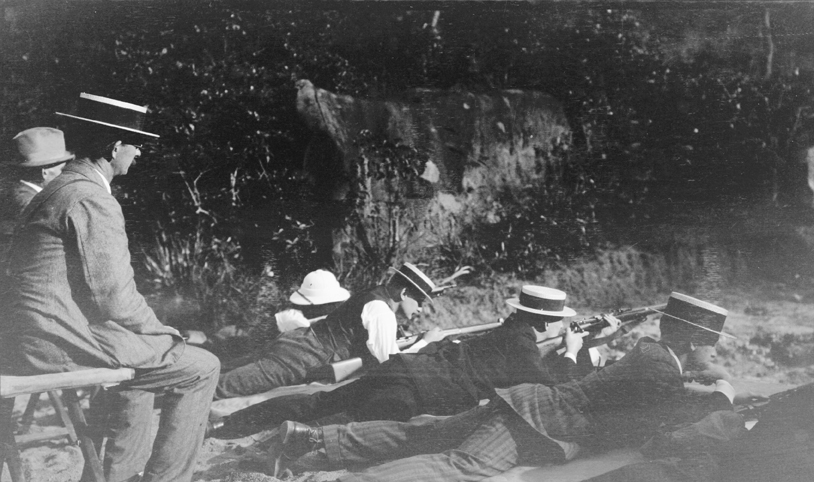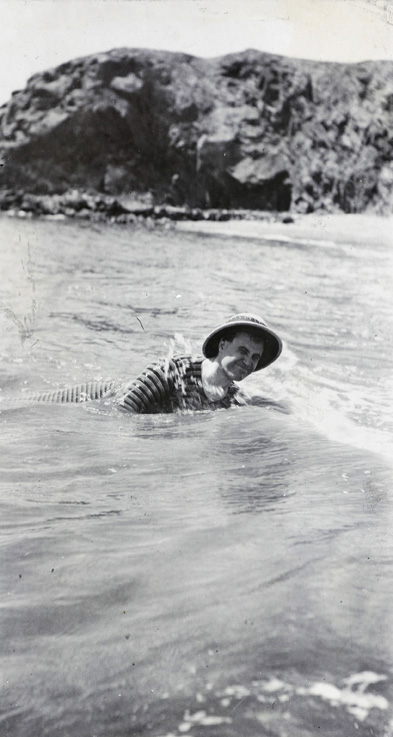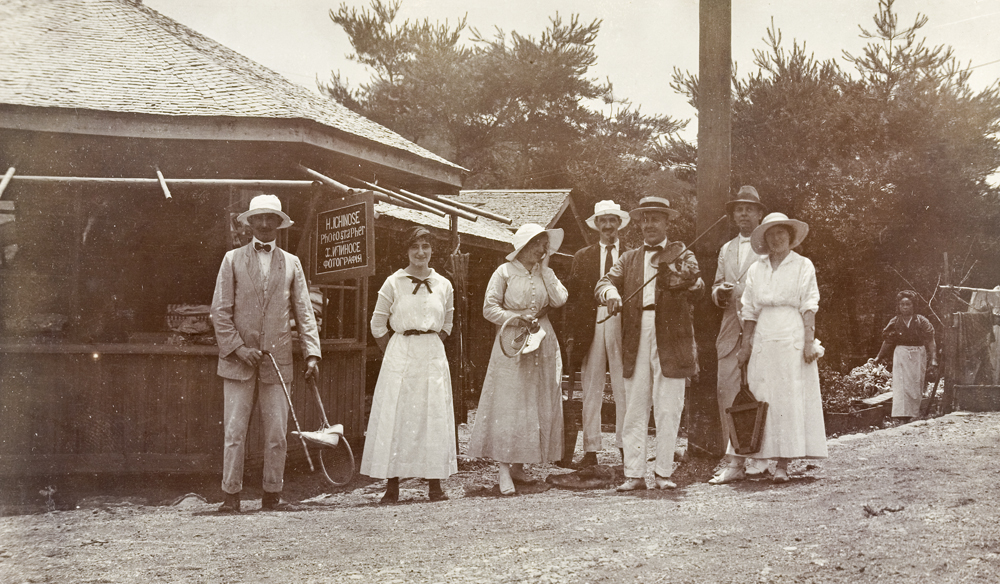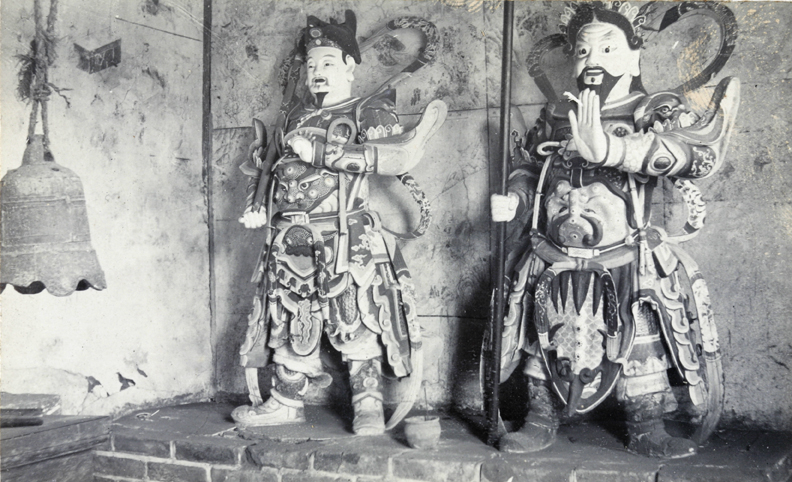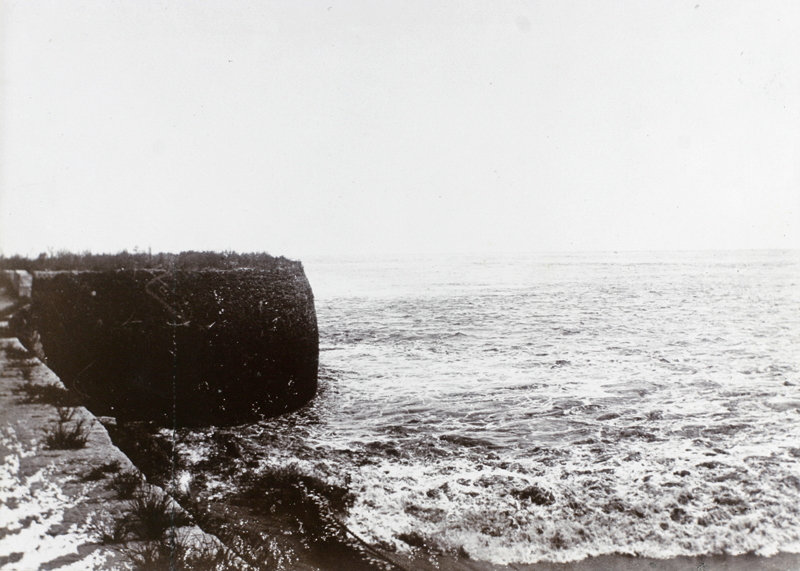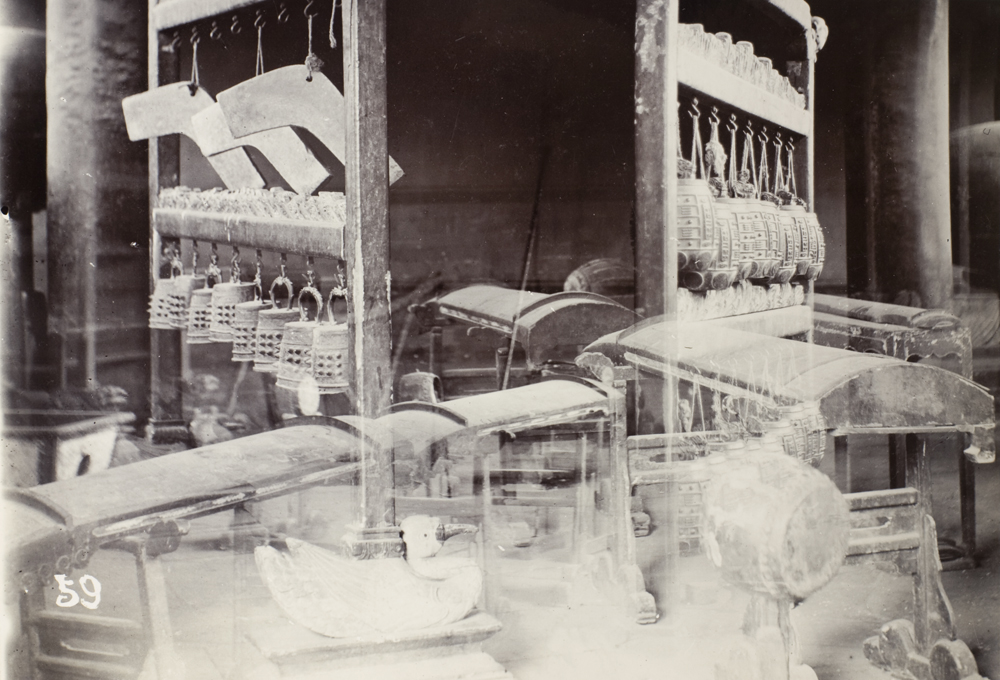
Musical instruments in Temple of Confucius, Chufu, Shantung (Qufu, Shandong), c.1903, National Archives (London), NA07-107
The great photographer Diane Arbus once observed that ‘a photograph is a secret about a secret. The more it tells you, the less you know.’ NA07-107 is the very picture of such secretive photography, if only because it is such a glorious double exposure: a cacophony of a photograph, which includes musical instruments in the Confucian Temple, in Confucius’s home town of Chufu, Shantung (Qufu, Shandong), in c.1903. (See also Louis Faurer’s iconic double exposure ‘Accident, New York City, 1952’: http://vuucollective.tumblr.com/post/12436296133/firsttimeuser-louis-faurer-accident-new-york).
Whilst digitizing some fifteen thousand old photographs for the Historical Photographs of China project, I have travelled vicariously all over a China of long ago, gradually getting to know pieces of that vast country, rectangle by rectangle, as an enigmatic, silent, still, monochrome place, a place that does not exist like this any more. Imagination, memory and a general understanding can fill in for the missing sensory input, rightly or wrongly. But with thorough background and historical knowledge, the photos can be read: people, places and events can be identified; information, stories and secrets can be revealed.
However, more caveats apply: “Photographs are ambiguous. A photograph is a meeting place where the interests of the photographer, the photographed, the viewer and those who are using the photograph are often contradictory. These contradictions both hide and increase the natural ambiguity of the photographic image.” (John Berger: Another Way of Telling).
And yet, when looking at photographs, it is not too difficult to acknowledge these important inherent contradictions and nuances, to bear in mind the whos, what fors, and whys. If asked how such contingent material could be of use to historians, it could be argued that there is something about a photograph that is unambiguously real and true—benefiting from what László Moholy-Nagy called the ‘hygiene of the optical’—and that photographs are in fact informative historical documents, when read perceptively (László Moholy-Nagy: Painting, Photography, Film).
A longer version of the above post by Jamie Carstairs, was published in ‘Picturing China 1870-1950: Photographs from British Collections’ by Robert Bickers et al (2007), available from our Amazon bookstore.

